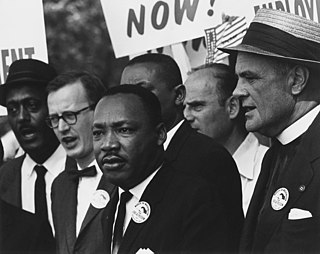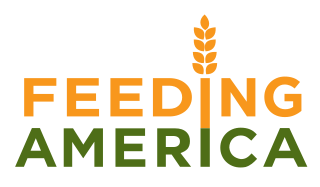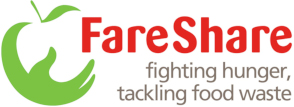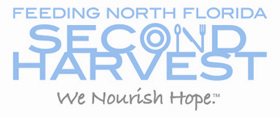| Formation | 1983 |
|---|---|
| Founder | Kathy Goldman |
| Type | Non-profit organization |
Region | New York City |
| Leslie Gordon | |
Volunteers | 1,200 |
Food Bank For New York City is a non-profit social services organization and the major hunger-relief organization working against hunger in the five boroughs. [1] Its aim is to organize food, information and support for needy citizens of New York City.
The Food Bank For New York City was founded in 1983. It has a network of approximately 1,200 emergency and community food providers, including soup kitchens, food pantries, shelters, low-income day care centers, as well as senior, youth and rehabilitation centers. Food Bank helps to provide approximately 400,000 free meals daily. [2] Since its inception, it has collected, warehoused and distributed more than 744 million pounds of food. [3]
Food Bank has a staff of over 100 full-time employees and is governed by a voluntary Board of Directors.
Food Bank is a certified member of Feeding America [4] and the New York State Food Bank Association. In July 2007, the Food Bank acquired FoodChange, Inc. [5]
Founded on research showing that approximately two million New Yorkers are at risk of hunger [6] and that more than half of city households with children would not be able to afford food for their families within three months of the loss of a job or household income, [7] the Food Bank works to fight hunger with food donated from, among other sources, the Fulton Fish Market, The Hunts Point meat and produce markets, the Hunts Point Cooperative Market, government agencies and America's Second Harvest. In addition, Food Bank runs Kid's Café, an after-school program providing free meals to children. According to the organization's 2013 Annual Report, Food Bank is the largest anti-hunger network in the United States, providing "food and services responsible for 72.5 million meals a year". [8] According to the 2017 Annual Report, Food Bank has provides 1.3 billion needed meals since its foundation in 1983. [9]
In 2005 and 2006, the Food Bank received a four-star rating from Charity Navigator, the largest charity evaluator in the United States. [10]
The Food Bank was also recognized by America's Second Harvest with a second "Mighty Apple" award for most produce collected and distributed within the network, as well as with their first "Model Fundraising Campaign of the Year" award for the 2006 CANS Film Festival. [11] The Food Bank was also honored with the Mighty Apple Award in 2009, 2010 and 2011. [12]
In 2007, it was among over 530 New York City arts and social service institutions to receive part of a $30 million grant from the Carnegie Corporation, which was made possible through a donation by New York City mayor Michael Bloomberg. [13]
In 2011 Food Bank was listed on Forbes magazine 200 Largest Charities list. [14]
In 2014 Food Bank was inducted into the Feeding Americas 2014 Advocacy Hall of Fame. [15]
In 2015 The Food Research & Action Center (FRAC) awarded Food Bank-chaired NYC Task Force with its Innovative Anti-Hunger Work award. [12] [16]
In 2016 Food Bank was honored with the John Dewey Award [17] and was named as Company of the Year.

The World Food Programme (WFP) is an international organization within the United Nations that provides food assistance worldwide. It is the world's largest humanitarian organization and the leading provider of school meals. Founded in 1961, WFP is headquartered in Rome and has offices in 80 countries. As of 2021, it supported over 128 million people across more than 120 countries and territories.

In politics, humanitarian aid, and the social sciences, hunger is defined as a condition in which a person does not have the physical or financial capability to eat sufficient food to meet basic nutritional needs for a sustained period. In the field of hunger relief, the term hunger is used in a sense that goes beyond the common desire for food that all humans experience, also known as an appetite. The most extreme form of hunger, when malnutrition is widespread, and when people have started dying of starvation through lack of access to sufficient, nutritious food, leads to a declaration of famine.
The Hunger Site is the original click-to-donate site created in 1999 that gets sponsorship from advertisers in return for delivering users who will see their advertisements. The Hunger site encourages visitors to click a button on the site, once per day, asserting that each unique click results in a donation "equivalent" to 1.1 cups of food. The Hunger Site is not a charity; it is a for-profit corporation which donates the revenue from its advertising banner to selected charities. Currently, these are Millennium Promise, Food Recovery Network, Partners in Health, Feeding America and Mercy Corps.

A food bank is a non-profit, charitable organization that distributes food to those who have difficulty purchasing enough to avoid hunger, usually through intermediaries like food pantries and soup kitchens. Some food banks distribute food directly with their food pantries.

Feeding America is a United States–based non-profit organization that is a nationwide network of more than 200 food banks that feed more than 46 million people through food pantries, soup kitchens, shelters, and other community-based agencies. Forbes ranks it as the largest U.S. charity by revenue. Feeding America was known as America's Second Harvest until August 31, 2008.

The Houston Food Bank (HFB) is a non-profit organization and the nation's largest food bank by distribution; providing access to 207 million nutritious meals in 18 counties in southeast Texas. The food bank's operations are made possible through a network of 1,800 community partners alongside their partner food banks in Montgomery County, Galveston and Brazos Valley. Headed by its current President and CEO, Brian Greene, the Houston Food Bank is a member organization of Feeding America, with a four-star rating from Charity Navigator. The Houston Food Bank, which bares the mission statement of Food for Better Lives, continues to be acknowledged for its community impact. Notable recognitions include Food bank of the Year in 2015, presented by Feeding America and the Pinnacle winner in 2012 and 2014, presented by the Better Business Bureau.

Food rescue, also called food recovery, food salvage or surplus food redistribution, is the practice of gleaning edible food that would otherwise go to waste from places such as farms, produce markets, grocery stores, restaurants, or dining facilities and distributing it to local emergency food programs.

Redwood Empire Food Bank (REFB) is a food bank on the North Coast of California which belongs to the Feeding America network. Its mission is to end hunger in its community.
The Daily Bread Food Bank (DBFB) is a Canadian non-denominational Christian charity organization with a stated goal of ending hunger in Toronto by collaborating with all to eliminate food insecurity and advocate for solutions to end poverty. Founded in 1983, the organization is based in Toronto, Ontario, and is one of the largest food bank organizations in Canada.

FareShare is a charity network established in 1994, which aims at relieving food poverty and reducing food waste in the United Kingdom. It does this by obtaining good quality surplus food from the food industry that would otherwise have gone to waste and sending it to frontline charities and community groups across the UK.

Leket Israel, The National Food Bank, a registered nonprofit Israel-based charity, is the leading food rescue organization in Israel, serving 175,000+ needy people weekly. Leket Israel rescues surplus agricultural produce and collects excess cooked meals for redistribution to the needy throughout Israel via its network of 200+ nonprofit organization (NPO) partners.
Canstruction is a United States 501(c)(3) nonprofit organization providing canned food to local food banks in cities holding Canstruction competitions. Canstruction is an international charity competition where architects, engineers, contractors and students they mentor, compete to design and build giant structures made entirely from full cans of food. At the close of the competition all of the food is donated to local food banks where the competitions are held. Canstruction was founded in 1992 by Cheri Melillo and has since raised millions of pounds of food for food banks in participating cities across the world. With more than 170 cities and over 30,000 volunteers participating in Canstruction competitions, Canstruction has grown to become one of the largest food drives for food bank donations in the world.

Hunger in the United States of America affects millions of Americans, including some who are middle class, or who are in households where all adults are in work. The United States produces far more food than it needs for domestic consumption—hunger within the U.S. is caused by some Americans having insufficient money to buy food for themselves or their families. Additional causes of hunger and food insecurity include neighborhood deprivation and agricultural policy. Hunger is addressed by a mix of public and private food aid provision. Public interventions include changes to agricultural policy, the construction of supermarkets in underserved neighborhoods, investment in transportation infrastructure, and the development of community gardens. Private aid is provided by food pantries, soup kitchens, food banks, and food rescue organizations.

Second Harvest North Florida (SHNF) is a 501(c)(3) non-profit organization located in Jacksonville, Florida, that performs food rescue and redistribution to partner agencies in one quarter of Florida's 67 counties. The charitable organization has been active for over 30 years.
City Harvest is one of New York City's largest food rescue organizations. The organization collects food waste from restaurants, bakeries, and cafes.
Forgotten Harvest is a non-profit food rescue organization that collects food that would otherwise go to waste and delivers it free of charge to organizations feeding the hungry in Metro Detroit. In 2015, the nonprofit distributed more than 40 million pounds of food to more than 260 emergency food providers.
Northern Illinois Food Bank is a 501(c)(3) non-profit organization that focuses on providing food to those in need in northern Illinois. Partnerships and donors allow for more than 71,000 people to be fed each week through different programs. Northern Illinois Food Bank operates in 13 counties surrounding Chicago. The organization has four distribution centers located in Geneva, Rockford, Park City, and Joliet, which distribute food to pantries who then allocate the food to people.
City Harvest London is a charitable organisation focused on alleviating food insecurity and food waste across London. City Harvest feeds over 12,000 Londoners a day with quality, nutritious, surplus food from a myriad of food producers. City Harvest delivers food to over 350 organisations and projects in London that serve almost every vulnerable group in the capital including but not limited to; children, refugees, families, women facing domestic violence, the homeless. Food often acts as a tool that breaks down barriers between organisations and their users and becomes a gateway to services which address other societal issues.
Second Harvest of Silicon Valley is a food bank based in San Jose, California, that serves Santa Clara and San Mateo counties, including Silicon Valley and the San Francisco Peninsula. With $136 million in revenue in 2019, it is the largest food bank in the San Francisco Bay Area and the 12th largest in the United States. As of 2020, it serves about 500,000 people on average per month. It is affiliated with Feeding America, a national network of food banks, as well as the California Association of Food Banks. Leslie Bacho is the organization's chief executive officer.